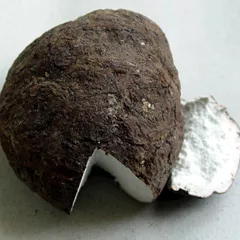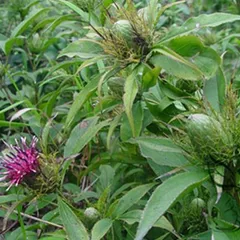Nephrotic syndrome according to Chinese Medicine
The information provided here is not a replacement for a doctor. You shouldn't use it for the purpose of self-diagnosing or self-medicating but rather so you can have a more informed discussion with a professional TCM practitioner.
Nephrotic syndrome factsheet
Possible causes and remedies:
Symptoms: Lumps Nausea Tumors and ten other symptoms
Recommended formula: Er Chen Tang and six other formulas
Spleen Deficiency with Dampness
Symptoms: Edema Diarrhea Urinary difficulty and one other symptom
Recommended formula: Wu Ling San
In Chinese Medicine, nephrotic syndrome can be associated with five so-called "patterns of disharmony". Chinese Medicine sees the body as a system, not a sum of isolated parts. A "pattern" is when the system's harmony is disrupted. It is not equivalent to the Western concept of "disease", as a matter of fact here nephrotic syndrome can be caused by five different patterns.
To understand whether someone's nephrotic syndrome might be caused by a given pattern, one needs to look for signs and symptoms associated with the pattern beyond what one might typically experience from nephrotic syndrome alone. For instance when nephrotic syndrome is caused by the pattern Phlegm, patients also experience symptoms such as feeling of oppression of the chest, muzziness of the head, dizziness and nausea. Similarly, patients with Phlegm typically exhibit slippery (Hua) or wiry (Xian) pulses as well as swollen tongue with sticky coating .
We've listed below a description of the five patterns associated with nephrotic syndrome so that you can start to get an understanding of the various possibilities according to Chinese Medicine.
Once identified, patterns are often treated using herbal formulas. Drinking herbal infusions is the most common remedy in Chinese Medicine, together with acupuncture. Here we detail below three formulas that can help treat the various patterns associated with nephrotic syndrome, depending on which pattern fits your profile.
The five "patterns of disharmony" associated with nephrotic syndrome
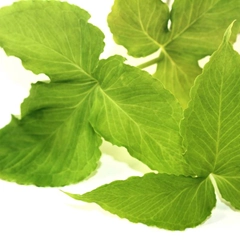
Crow-Dipper Rhizomes (Ban Xia) is the key herb for Er Chen Tang, a formula used for Phlegm
Phlegm
Pulse type(s): Slippery (Hua), Wiry (Xian)
Tongue coating: Sticky coating, Thick coating
Tongue shape: Swollen
Recommended herbal formulas: Er Chen Tang, Liu Jun Zi Tang, Ban Xia Bai Zhu Tian Ma Tang, Wen Dan Tang, Hao Qin Qing Dan Tang, Xing Su San, Wu Ling San
Symptoms: Lumps Nausea Tumors Nodules Obesity Delirium Dizziness Overweight Feeling of heaviness Muzziness of the head Numbness in the limbs Thick greasy secretions Feeling of oppression of the chest
Phlegm has a great importance in Chinese Medicine as it is both a condition in and of itself as well as a cause for other diseases.
The main cause for the formation of Phlegm is Spleen Deficiency since the Spleen rules the transformation and transportation of Body Fluids. If this function is impaired, Body Fluids accumulates and change into Phlegm.
The Lungs and Kidneys may also be involved since they each play a role in handling body Fluids: the Lungs disperse and descend Body Fluids while the Kidneys transform and excrete them. Again, if they fail to perform those roles, Body Fluids will accumulate and become Phlegm.
That being said, the Spleen malfunction is the fundamental reason behind the formation of Phlegm and, as such, treatments will focus on it first and foremost.
There are two broad types of Phlegm: so-called "Substantial Phlegm" and "Non-Substantial Phlegm". Simply put, Substantial Phlegm can be seen, such as sputum in the Lungs and throat. Non-Substantial Phlegm is more hidden and will manifest itself into, for instance, kidney stones, gallstones or arthritic bone deformities.
Phlegm can accumulate and settle down in different parts of the body and lead to corresponding symptoms. For example, if it stays in the joints, muscles and Channels, there are muscle numbness, bone deformities and etc. If it mists the Heart, it causes many mental illness. If it settles in the Gall Bladder or Kidney, it leads to stones in these Organs.
Phlegm can further be categorized according to its nature: there is Damp-Phlegm, Phlegm-Heat, Cold-Phlegm, Wind-Phlegm, Qi-Phlegm, Phlegm-Fluids and etc.
"Phlegm-Fluids" is very similar to Dampness and is very watery and thin. It can be heard splashing in the body, found usually in the Stomach and Small Intestines, hypochondrium, limbs or above the diaphragm.
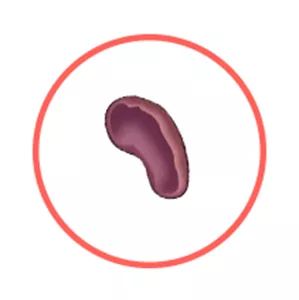
The Spleen is a so-called "Zang" Organ. Learn more about the Spleen in Chinese Medicine
Spleen Deficiency with Dampness
Recommended herbal formula: Wu Ling San
Symptoms: Edema Diarrhea Urinary difficulty General sensation of heaviness
Nephrotic syndrome might be due to Spleen Deficiency with Dampness if the condition is paired with typical pattern symptoms such as edema, general sensation of heaviness, diarrhea and urinary difficulty.

The Triple Burner is a so-called "Fu" Organ. Learn more about the Triple Burner in Chinese Medicine
Phlegm in the Lower Burner
Recommended herbal formula: Wu Ling San
Symptoms: Vertigo Coughing Shortness of breath Vomiting frothy saliva Throbbing pulsations just below the umbilicus
Nephrotic syndrome might be due to Phlegm in the Lower Burner if the condition is paired with typical pattern symptoms such as throbbing pulsations just below the umbilicus, vomiting frothy saliva, vertigo and shortness of breath.

Prepared Aconite (Zhi Fu Zi) is the key herb for Fu Zi Tang, a formula used for Yang Deficiency with Cold-Damp
Yang Deficiency with Cold-Damp
Pulse type(s): Choppy (Se), Deep (Chen), Minute (Wei), Slow (Chi)
Tongue coating: Thin white coating
Recommended herbal formula: Fu Zi Tang
Symptoms: No thirst Cold extremities Generalized body pain Aching bones and joints Aversion to cold - especially at the back
Nephrotic syndrome might be due to Yang Deficiency with Cold-Damp if the condition is paired with typical pattern symptoms such as generalized body pain, aching bones and joints, cold extremities and no thirst. Similarly, patients with Yang Deficiency with Cold-Damp typically exhibit choppy (Se), deep (Chen), minute (Wei) or slow (Chi) pulses as well as a tongue with thin white coating.

The Kidneys is a so-called "Zang" Organ. Learn more about the Kidneys in Chinese Medicine
Kidney Yang Deficiency
Pulse type(s): Deep (Chen), Slow (Chi), Weak (Ruo)
Tongue color: Pale
Recommended herbal formula: You Gui Wan
Symptoms: Impotence Incontinence Spermatorrhea Aversion to cold Cold extremities Edema of the lower extremities Weakness and aching in the knees Exhaustion from long-term illness Soreness and weakness in the lower back
Nephrotic syndrome might be due to Kidney Yang Deficiency if the condition is paired with typical pattern symptoms such as exhaustion from long-term illness, aversion to cold, cold extremities and impotence. Similarly, patients with Kidney Yang Deficiency typically exhibit deep (Chen), slow (Chi) or weak (Ruo) pulses as well as a pale tongue.
The three herbal formulas that might help with nephrotic syndrome


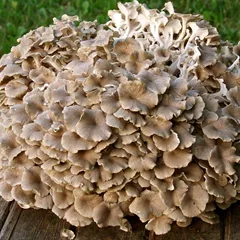
The top herbs in Wu Ling San are Water Plantain (Ze Xie), Poria-Cocos Mushrooms (Fu Ling) and Polyporus (Zhu Ling)
Wu Ling San
Source date: 220 AD
Number of ingredients: 5 herbs
Key actions: Promotes urination,. Warms the Yang. Strengthens the Spleen. Promotes Qi transformation function. Drains Dampness. Clears edema.
Why might Wu Ling San help with nephrotic syndrome?
Because it is a formula often recommended to help with the patterns Phlegm, Spleen Deficiency with Dampness and Phlegm in the Lower Burner which are sometimes associated with nephrotic syndrome. If any of these patterns look like something you might suffer from, this formula might help (although please seek confirmation with a professional practitioner beforehand).



The top herbs in Fu Zi Tang are Prepared Aconite (Zhi Fu Zi), Atractylodes Rhizomes (Bai Zhu) and Poria-Cocos Mushrooms (Fu Ling)
Fu Zi Tang
Source date: 220 AD
Number of ingredients: 5 herbs
Key actions: Warms the Meridians. Assists the Yang. Dispels Cold. Transforms Dampness.
Why might Fu Zi Tang help with nephrotic syndrome?
Because it is a formula often recommended to help treat Yang Deficiency with Cold-Damp, a pattern sometimes associated with nephrotic syndrome. If it looks like you might suffer from Yang Deficiency with Cold-Damp, this formula might help (although please seek confirmation with a professional practitioner beforehand).


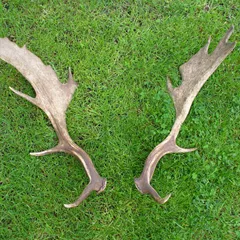
The top herbs in You Gui Wan are Prepared Aconite (Zhi Fu Zi), Cinnamon Bark (Rou Gui) and Deer Antler Glue (Lu Jiao Jiao)
You Gui Wan
Source date: 1624 AD
Number of ingredients: 10 herbs
Key actions: Warms and tonifies Kidney Yang. Replenishes the Essence. Tonifies the Blood.
Why might You Gui Wan help with nephrotic syndrome?
Because it is a formula often recommended to help treat Kidney Yang Deficiency, a pattern sometimes associated with nephrotic syndrome. If it looks like you might suffer from Kidney Yang Deficiency, this formula might help (although please seek confirmation with a professional practitioner beforehand).
Symptoms related to nephrotic syndrome
Cold extremities Feeling of oppression of the chest Muzziness of the head Dizziness Nausea Feeling of heaviness Numbness in the limbs Lumps Nodules Tumors



